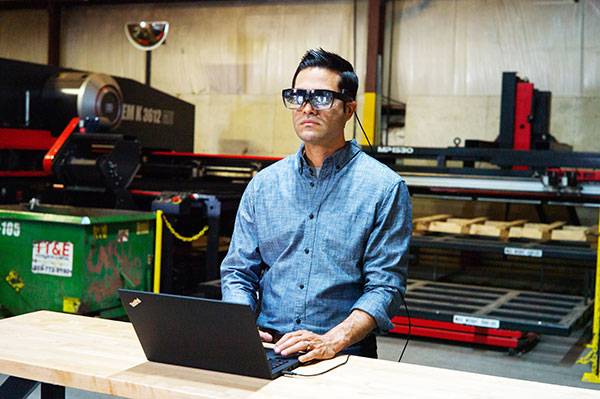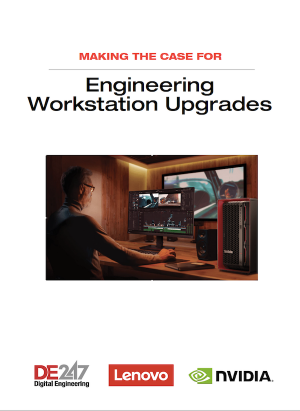Countermeasures for the Great Resignation
AR/VR-based training could be the antidote to recruitment and retention blues.

Image courtesy of Getty.
Latest News
June 20, 2022
Researchers predict that by 2030, U.S. manufacturing will have a significant 2.1 million unfilled jobs. Global research and consulting firm Deloitte in May 2021 included this sobering statistic in its report, “Creating pathways for tomorrow’s workforce today.”
Several thousand vacancies may be a sign of swift growth, but a couple million anticipated open positions? To put it mildly, that’s the symptom of a problem.
“The manufacturing industry has been sustained by a generation of workers that see the value in making things and are accustomed to production work that is shift-based. Many of these workers are likely entering retirement in the next decade,” the report states, raising alarm bells.
The problem is exacerbated by what some call “The Great Resignation.” In her Washington Post opinion piece, columnist Heather Long writes, “Manufacturing has weathered the biggest surge in workers quitting—a nearly 60% jump compared with pre-pandemic.”
“Manufacturing workers want higher pay,” Long adds. “But they also want respect, a safe workplace and more flexible schedules, and they’re willing to walk out if they don’t get it” (“Why manufacturing workers are voluntarily leaving jobs at rates never seen before,” January 9, 2022).
The shortage in applicants is particularly prominent in middle-skill jobs, Deloitte notes. “These jobs typically require some level of technical training or applied skills. Examples include computer numerically controlled [CNC] machinists, welders and maintenance technicians. At the higher end of experience, some of these jobs require more specialized skills.”
In this article, we look at the role of technology in addressing the applicant shortfall and retaining the veterans for as long as possible.
Changing Work Habits
A significant 62% of the respondents rank “attracting and retaining a quality workforce” as one of their current challenges, according to the 2020 industry outlook survey results from the National Association of Manufacturers (NAM).
Josh Cramer, education and workforce development director for the private-public organization America Makes, works with manufacturing partners to address skill gaps. The pressure is higher for small and midsize enterprises (SMEs), he notes.
“The problem exists in manufacturers of all sizes, but large manufacturers can afford to pay more to attract and retain talents,” he says.
Cramer reveals he is “a millennial by birth, but raised by Gen X parents,” thus he manifests the attitudes of both groups. “The past generations lived to work; we work to live. Most of us are working to fund what we love to do,” he says.
The pandemic also made people reassess their life-work balance.
“People now want more flexibility, the opportunity to work remotely. They learned that they can survive that way,” notes Cramer.
In May 2022, America Makes invited local manufacturers to Youngstown, OH, for a workshop to collaborate on an initiative called “Building the Guide to 21st Century Talent.”
The goal is “to design an effective guide to address workplace challenges, including recruitment and onboarding, work-based learning and career pathways,” according to the press release.
Cramer said that he and his colleagues now break up large concepts into smaller chunks—10 minutes each. “We call them micro-learning,” he says.
While the entire process of 3D printing in metal might be intimidating, when broken down as the CAD designer’s function, the machinist’s function and the software’s role, it becomes easier to digest, he says. “The key is, you don’t have to be an expert in every process.”
Participants and partners for America Makes training programs range from regional governments and manufacturers to the Department of Defense. But almost everyone wants a dynamic hands-on training setup, Cramer notes, and augmented reality (AR) and virtual reality (VR) can provide such an experience.
Learning in AR/VR
Nathan Pettyjohn, Lenovo’s AR/VR lead, believes virtual experience makes training more efficient, leading to greater retention of lessons.
“Workers who have gone through VR training feel like they have actually experienced the work environment. This is very different from watching a video or reading a manual,” he says.

Lenovo offers AR/VR hardware under its ThinkReality brand, targeting the training and on-demand work instruction segments.
Image courtesy of Lenovo.
A PC and workstation maker, Lenovo also offers a line of professional AR/VR hardware under its ThinkReality brand, targeting training, AEC (architecture, engineering, construction) and oil & gas segments. As the pandemic forces many projects into the virtual realm, the company expects growing adoption of AR/VR in remote assistance, digital knowledge capture, worker training and on-demand work instructions. For manufacturing, the detailed 3D assembly models and digital twins are a big part of the AR/VR deployment.
Saint-Gobain, the Cedex, France-headquartered construction materials distributor, is one of Lenovo’s clients. Saint-Gobain’s 22,000 employees annually clock up about 400,000 hours of training, Pettyjohn says.
Saint-Gobain uses the Lenovo Mirage VRS3 headset and partner Uptale’s digital learning software to teach employees safety procedures and compliance on price labeling, according to Pettyjohn, who says that more VR training modules are in development.
“As the trainees perform their job, they can track and identify compliance issues,” he says.
A Touchy Subject
One hurdle with virtual training, however, is the lack of tactile sensation. While immersive high-definition visuals make the trainee feel like they are in the real work environment, the lack of physical objects prevents them from developing critical muscle memory.
“For the applications where tactile sensation is critical, we are exploring collaboration with companies who make full-body haptic suits and gloves, allowing for touch sensations to be built into the training. But these are still in the early stage,” says Pettyjohn.
While the idea of learning a process in VR might sound daunting, Pettyjohn points out the virtual environment is more natural and intuitive. Therefore, the learning curve is not as steep.
“With AR [where the trainee usually wears a headset and uses his or her hands to perform certain tasks in the real world], there may be a little bit of a learning curve. Voice recognition as an input mechanism to the AR glasses is one way in which we’re making it easier to adopt in these work and training environments where a hands-free experience is needed,” says Pettyjohn.
In the AR workflow, the ThinkReality A3 is tethered to a Motorola smartphone for touch-screen commands. “So this is very natural, like wearing your regular glasses and using your phone,” says Pettyjohn.
Lenovo sometimes uses system integrators to offer tailor-made training and remote assistance applications.
“A good example of that is Micron, which uses our xR services to integrate their standard operating procedures into their AR application. Many of these customers also tend to be protective of their intellectual property, so we offer custom security options,” says Pettyjohn.
The younger workforce, Pettyjohn suggests, expects technology like AR/VR to be part of their job; they will not be put off by the idea. Conversely, the absence of it may feel unnatural to them.
“It should be part of the manufacturers’ strategy to attract them,” he says.
More America Makes Coverage

More Lenovo Coverage

Subscribe to our FREE magazine, FREE email newsletters or both!
Latest News
About the Author
Kenneth Wong is Digital Engineering’s resident blogger and senior editor. Email him at kennethwong@digitaleng.news or share your thoughts on this article at digitaleng.news/facebook.
Follow DE







